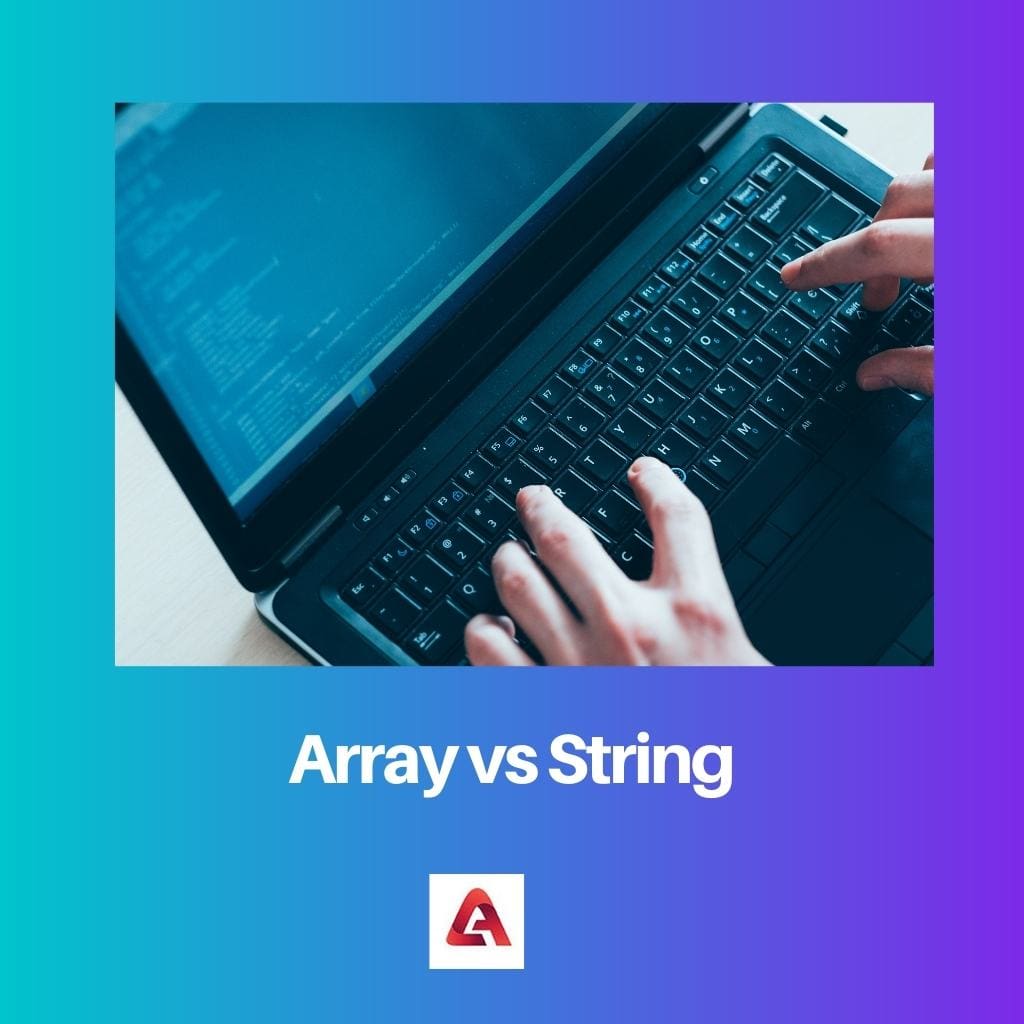If anyone is even remotely familiar with computer programming, then there is a good chance that one might have come across the terms Array and String.
Even if one does not know about programming, one would have a fairly good idea of what these terms mean. This is because these terms are used quite a lot daily.
When we talk about arrays, we think about a group of items kept together in an orderly fashion, such as an array of dominos. Again, when talking about string, we think about several letters or words.
When we say, ‘That person spoke a string of words which made no sense’, we mean that the person spoke a collection of words arranged in a specific manner.
The above definitions might seem informal. However, the actual definitions of arrays and strings are not too different from these.
Key Takeaways
- An array is a collection of elements of the same data type, whereas a string is a collection of characters.
- Arrays are mutable, meaning their values can be changed, whereas strings are immutable and cannot be changed once created.
- Arrays are used for mathematical operations and storing and accessing large amounts of data, while strings represent text and manipulate strings.
Array vs String
The difference between an array and a string is that an array is a data structure capable of holding variables of any data type, while a string is an object that can only deal with the char data type.

Comparison Table
| Parameters of Comparison | Array | String |
|---|---|---|
| Data Type | Arrays can hold items of any data type. | Strings can hold items of only the char data type. |
| Category | The array is a data structure. | The string is an object. |
| Mutability | Arrays are mutable. | Strings are immutable. |
| Length | When operating, the length of an array is fixed, whether by the programmer or the user. | The length of a string is not fixed. |
| End Character | Usually, arrays do not end with a null character. | Strings end with a null character. |
What are Arrays?
An array is one of the most basic types of data structures in programming. An array is a very fundamental unit in programming. It is present in many programs to deal with variables and process them, in an iterative manner.
However, the most important use for arrays is for calculation purposes. Numerical values are entered one after the other, and then these values might get processed by one or more than one function, based on the program, which finally returns a zero, one, or more than one value in return.
Data structures are the skeleton structure that tells us how a group of data is inserted and how the operations in a function will deal with these data items. Other important examples of data items are stacks, queues, linked lists, trees, etc.
What is important to know is that one can treat these data structures as secondary data structures, as all of them can be created with the help of arrays only.
Another important characteristic of arrays that one should know is that the size of arrays is pre-defined by the programmer or the user before the array is used. This is because arrays follow a method of iterative calculation.
A counter moves through each object in an array to seek a certain object. If the upper limit of the array is not known, then the counter does not know where to start or where to stop, which renders the array useless. Hence, it is important to specify the size of the array before using it.
Arrays need not be used only for calculation and can store any other data type other than numerical integer values. Arrays can store floats, chars, doubles, etc. This is because an array is a data structure, basically a vessel, and a vessel can hold anything inside it as long it is a valid input.

What are Strings?
A string is a collection of objects of the char data type arranged in a specific manner. It is important to note that a string is an object, but its subparts can also be treated as individual objects.
Strings are sometimes called data structures; however, in Object-Oriented Programming (OOP), strings are considered objects.
The memory allocation in the case of a string may vary from language to language. However, there are majorly two ways a string occupies memory.
One way is when the memory is allotted to a predetermined total amount, so any variable appended to the string will fill that space. The other one is where the memory occupied increases bit by bit as new variables are appended.
The former type of string is a fixed-length string, while the latter type is a variable-length string.
Another important characteristic of strings is that strings end with a null character. A null character is denoted by ‘\0’.
This helps determine the string length; often, this length is stored as a separate integer which might be used later in the program when one wants to manipulate the length of the string.

Main Differences Between Array and String
- The main difference between an array and a string is that an array is a data structure, while a string is an object.
- Arrays can hold any data type, while strings hold only char data types.
- Arrays are mutable, while strings are not.
- Arrays have a fixed length, while strings do not.
- Arrays do not have a null terminating character, while strings do.


